

NPSH, Total Dynamic Head and Best Efficiency Point are just some of the terminologies used during the pump selection process, but do you what they mean? Technical jargon can sometimes leave your head in a bit of spin, so if you want to learn the lingo and understand what these words mean, let us guide you through 27 terms that you're likely to come across when buying a pump!

With so many pump types, material options and performance specifications it can be difficult to ensure you are buying the right pump - and with factors such as application suitability and pump lifespan also to consider, the purchasing process can be even more difficult. So if you're unsure on the exact pump you require, Castle Pumps have put together the 'pump ordering guide' to help you find a pump that meets your specific requirements.
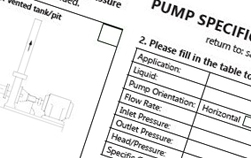
To make it as easy as possible for the customer, Castle Pumps have devised a pump specification form that prompts the user for the information required to specify a pumping solution that matches their requirements. Upon receipt of the form, Castle Pumps would devise a technical solution, which may include more than one offering, that would then be provided to the customer for verification.
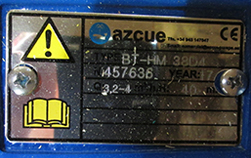
Knowing the serial number of your pump is important for when calling suppliers, as this is likely to be the first thing they ask you for. Every pump is different, so by having the serial number it can quickly help them to locate the relevant information, therefore quickly helping you along with replacing an existing pump or sourcing spare parts. This guide will help you locate the necessary information such as model and serial number for our most popular pumps.
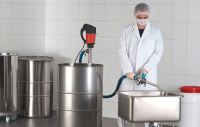
Fluid handling in some production lines is still done by hand to save money. For example, a business making small batches of cooking sauce may transfer the liquid ingredients from one container to another by hand. This may be cost effective initially, but there are many reasons why using an electric drum pump would be more beneficial and cost effective in the long run than continuing to manually handle it.

A pump name plate and the letters and numbers on it can tell you a lot about a pump (if you know what to look for)! A combination of two letters will give you the pump type and a further two letters will let you know if an additional priming pump is present. Following this are a selection of numbers and letters and these will give you an insight into the pumps specifications. Find out more in this handy guide on understanding pump model numbers.
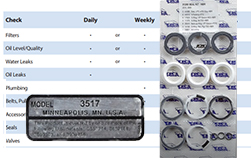
With CAT Pumps built to offer efficient, long life performance it's vital that you keep up to date with maintenance and change spare parts when required. This guide to CAT pump maintenance and spare parts offers all the information you will need for servicing and replacing parts on your CAT pump, from what to look out for, how to locate model numbers and the typical schedule you should follow.
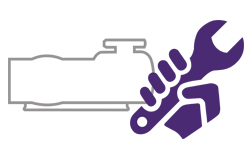
Pumps are a key part of any industrial plant or factory and downtime of a pump can be costly. Therefore, it's important for pump maintenance to be carried out so that downtime can be limited. There are two classifications of pump maintenance; corrective and preventive. Despite corrective maintenance being a quick solution to a problem, it doesn't deal with preventing it from happening again, whereas preventive maintenance does.
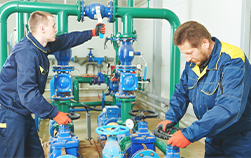
Centrifugal pumps are one of the most popular pumping solutions in the world but, just like any other pump, to keep centrifugal pumps running smoothly you need to implement a preventive maintenance schedule.To help you put together your centrifugal pump maintenance schedule, we asked our technical sales engineer for advice. Read the article to see their recommendations.
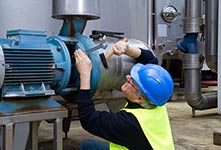
As labour costs are one of the most expensive overheads in any company, you need to consider the time your engineers spend on your existing processes. Pump maintenance can be one of these processes, so to make sure that you’re not spending more time than necessary read this article and find the three avoidable signs that your pumps may be costing your engineers’ time.
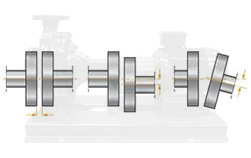
Understanding pump couplings - a complete guide. In this article we discuss everything you need to know about couplings; from what a coupling is, to the three different types available and the performance of each type. We also talk about the issue of misalignment, a factor which should always be considered when deciding which coupling is the right one for your application.
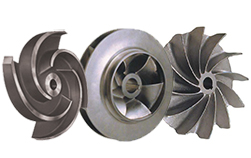
Impellers are an integral part of a centrifugal pump's operation. They come in varying shapes and sizes, offer an array of performance characteristics and are individually suited to different applications. Find out about the different types of impeller, the impact of diameter and what other factors need to be considered when choosing the right centrifugal pump for you.
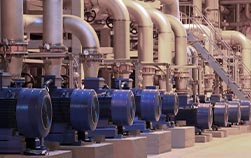
With so many pumping technologies and pump types, how do you know that you have the right pump for your process? Castle Pumps have over 15 yrs of experience supplying pumping solutions to the industrial and marine market, meaning we have extensive product knowledge and know typical scenarios where getting the wrong pump can result in expensive downtime and imperfect product. Read the article to learn more about how you can avoid these typical issues and select a more efficient pump that fit your process.
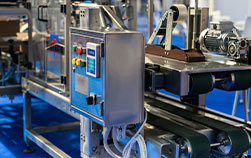
Labour costs are one of the most expensive overheads in any company. So are your engineers spending more time than necessary on operating the pump? If, so it is time to consider automating your pump and freeing up your employees' time for more value-added tasks and making your process more efficient. Read our article and find more about how you can automate your pump and how your process can benefit from pump automation.
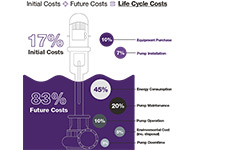
When selecting pumping solutions, the businesses usually are faced with budgetary pressures, which can affect their decision and make them choose not the most economical solution in the long term. Considering the upfront/initial costs without understanding the future running costs is a common mistake. To make sure you are buying a pump with the lowest long term cost, read this article and find more about the total life cycle cost of a pump.

The environmental impact of activities, products and services is measured and monitored now more than ever, especially within the marine and industrial markets. This along with the ever increasing need to reduce costs, means energy efficiency is an important factor - especially where your pumping system is concerned. In this article we discuss 7 ways that you can improve the energy efficiency of your pump...
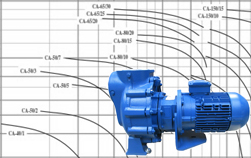
Pump curves are essential during the decision making process, as they provide the information you need in order to see whether the pump will perform how you need it to! In their most basic form, performance curves contain flow rate and pressure data. Being able to read a pump curve enables you to choose the right pump, rather than choosing one that could potentially cause damage, consume unnecessary energy or perform poorly.
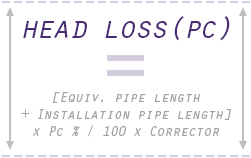
Head loss is an essential part of the preparation of looking for a pump with specific requirements. These head losses - also known as pressure losses - are sustained by the fluid as it flows through the pump and therefore can affect the pumping operation. Being such an important factor when making the decision on which pump to purchase, we have created this section for you to calculate the head loss within your application.
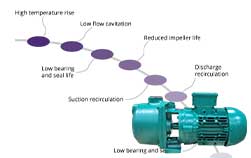
If you operate, maintain or specify centrifugal pumps then you will likely have heard of a pump curve and know that it is essential during the decision making process. However, what many misses to consider is the best efficiency point of the pump they are selecting, which can result in costly maintenance and downtime. So, read this article and learn more about what BEP is and what happens to your pump when you operate it too far left/right of the pump curve.
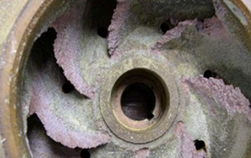
Ever wondered why you can't just have a pump that's suitable for all fluids? Well this article will explain why, and it's all down to chemical compatibility! One of the first questions you'll be asked when sourcing a pump, fitting or pipework is 'what fluid are you handling?', and this is because the fluid will determine what material the pump needs to be made of. This article will explain why chemical compatibility is such an important factor when choosing the best solution for your pumping requirements.

Doing a fluid compatibility check when sourcing a pump is one of the first things you need to think about! Certain fluid/material combinations can result in corrosion, swelling, brittleness, leaking and even the dissolving of the pump! So ensuring you have the right pump material for the fluid you want, is a must! This fluid compatibility table will give you the information you need to determine which material will suit your fluid best.
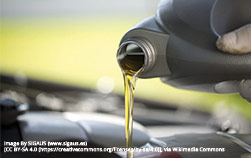
When specifying a pump for oil, we'll need to check what type of oil you'll be pumping. Viscosity is critical for pump selection, and with so many different types of oil it's no surprise that the range of viscosity can vary from oil to oil. Confirming the viscosity of the pumped medium will put you on track to getting the right pump for your application, and this article will explain in depth why knowing the viscosity is so important!
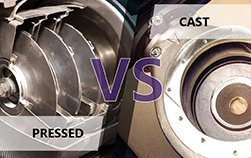
There are a number of differences between cast and pressed metals, but do you know how they could affect your decision when buying a pump? This article explains in depth what each type means as well as the pros and cons, so that you know which bits of information you should take into account when deciding on the best pump for your process.

A unit conversion tool for you to change product specifications into the units that you work with and know best. No more searching the internet for conversion tools that aren't precise or that you can't rely on, and no more trying your hand at tricky maths equations to figure it out. Here at Castle Pumps we've got it covered in just a few clicks!
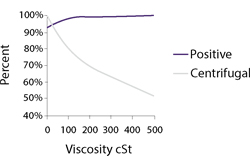
There are two main families of pumps; positive displacement and centrifugal (rotodynamic) pumps, both of which have their uses and best areas of application. It is important however to be able to identify when each pump type should be selected, which ultimately comes down to their working principle and the application at hand. This guide talks through those differences and gives examples of when one is more suited than the other.
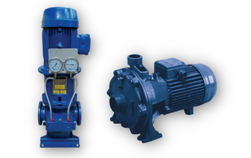
Centrifugal pumps are one of the most popular pumping solutions in the world due to their highly efficient and simple design. However, different types of centrifugal pumps are best suited for specific applications. For example, for applications that require higher pressure capabilities, multistage centrifugal pumps are preferred over single-stage pumps. But how do you know which centrifugal pump type is best for your application? Read our pump guide and learn more
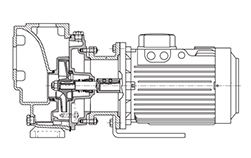
Submersible pumps are the easy option, but have you ever considered choosing a self-priming pump as an alternative? Self-priming pumps are often overlooked and sometimes not even considered in the first place, but these pumps have a number of advantages. We look at liquid handling, maintenance comparisons and differences in design, before summarising why we believe self-priming pumps to be a good alternative to submersible.
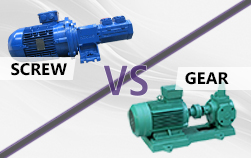
For applications involving the transfer of fuels, oils and other lubricating fluids, screw pumps and gear pumps are usually the pumping technology selected. Whilst a gear pump is a more than acceptable option for the handling of lubricating fluids, the design of the screw pump has several advantages over it.
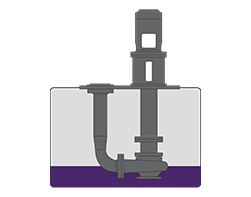
Vertical immersion pumps are a pumping technology with an elongated shaft encased in a column to separate the motor from the pump. Also known as vertical shaft or column pumps, they differ from submersible pumps because whilst their impellers are immersed in the fluid, the motor stays above it. These pumps have several design benefits which give it distinct uses compared to other pump types, and gives suitability for a variety of applications.
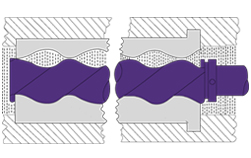
Progressive cavity pumps are a type of positive displacement pump known for their ability to handle viscous, shear sensitive and abrasive mediums at high pressures, with a smooth, low pulsating flow. Our progressing cavity pump guide includes technical information on the working principle of this pump type, benefits of the eccentric screw pump design and applications that the design is most suitable for.
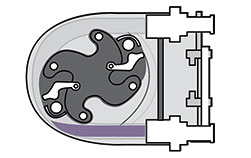
Peristaltic pumps are a popular choice for applications where other pump types fail to meet the requirements i.e. highly viscous or solid laden mediums. In addition, the wide variety of materials that the inner tube is available in, along with the peristaltic hose pump’s seal-less design, means that even aggressive chemicals can be handled.
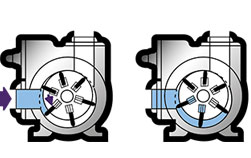
Rotary vanes pumps are part of the positive displacement pump family, designed for the transfer of clean low to medium viscosity fluids and fuels at relatively low pressures. Our sliding vane pump guide covers technical information concerning the mechanism by which the vane pump operates, advantages of the pump’s design and typical applications that vane pumps are often used for. Also included is a trouble shooting guide.
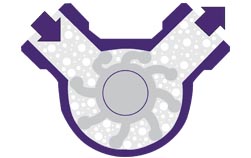
Flexible impeller pumps are a type of positive displacement pump, designed for the low pressure transfer, filling and dosing of a wide variety of fluids including shear sensitive and those containing solids. Our guide to the flexible vane pump design covers its working principle, benefits of the design and the applications that they are commonly used for. Also included is an impeller compatibility chart that determines the fluids each impeller type can be used with.
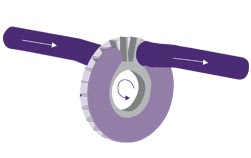
Side channel pumps have a working principle that is a middle ground between the two main pump families; centrifugal and positive displacement. They are designed for low flow, high pressure applications concerning low viscosity, clean fluids including those being handled at high temperatures and containing a level of gas. This guide provides information on the design benefits and applications that these pumps are suited to.
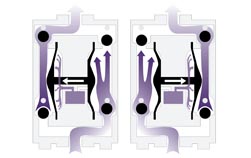
Air operated diaphragm or AODD pumps as they are also referred to as, are a type of reciprocating positive displacement pump that are powered by compressed air rather than an electric motor that most other pump designs are. They are a versatile design capable of handling low and high viscosity fluids, including those with solids and more aggressive chemicals. Read this guide for more information on their working principle.
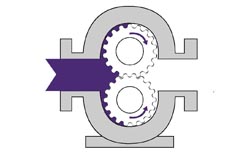
Gear pumps are one of the most popular types of positive displacement pump; with internal and external variations. They are commonly used for the transfer of high viscosity oils and other lubricating fluids at relatively high pressures. This guide gives a detailed insight into the working principle of both external and internal gear pumps and the applications they are typically chosen for.
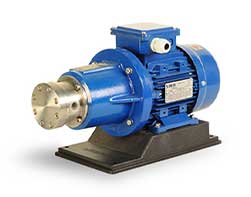
Generally speaking, pumps can be divided into mechanically sealed pumps and seal-less magnetic drive pumps. Although mechanically sealed pumps are usually a very popular choice, there are some key benefits seal-lees magnetically coupled pumps have over the traditional mechanical seals. This guide gives a detailed insight into the mag drive design benefits, potential drawbacks, and the typically chosen applications.
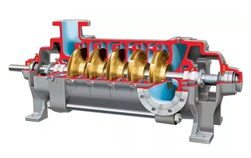
Due to their relative simplicity of design, centrifugal pumps are the most common pump type in the market. Centrifugal pumps are categorised into either single or multistage pumps, both of which have their uses. What is important to understand is where which should be selected, which ultimately comes down to their working principle and the application in question.
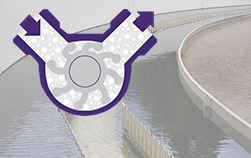
Solids handling pumps are found in many different industries from sewage, to food and drink manufacturing, to seawater dredging. Yet the solid content and viscosity of the fluids found within these industries can vary greatly and will impact your choices. To discover more about abrasive fluids and which pumps are suitable for the industries involved, we've put together this article explaining everything you need to know.
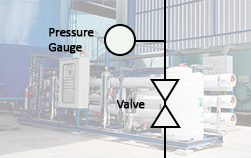
Industrial wastewater treatment, desalination and the food and drink sector are just some of the industries we provide pumps to and more specifically, reverse osmosis pumps. To understand exactly what reverse osmosis is, how the process works and how these industries use it, we've put together this article explaining everything you need to know.
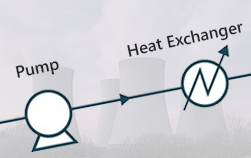
Whether you're removing unwanted heat from machinery or cooling down a building, many cooling pump applications use water due to it's accessibility and low cost; but water isn't the only resource used for cooling. In this article, we discuss the different methods used in cooling systems and the applications they are commonly used in.

Pumping solutions for fish farms are key elements to consider as fish farming requires high quality and reliable equipment to keep up with the market demand. Aquaculture pump selection can greatly impact the production process and is crucial for applications such as seawater transfer across land, recirculating water, transferring fish waste and oil, and even live fish handling. So don't let your pump cause any downtime and learn how to select the right pumping solution for your application.
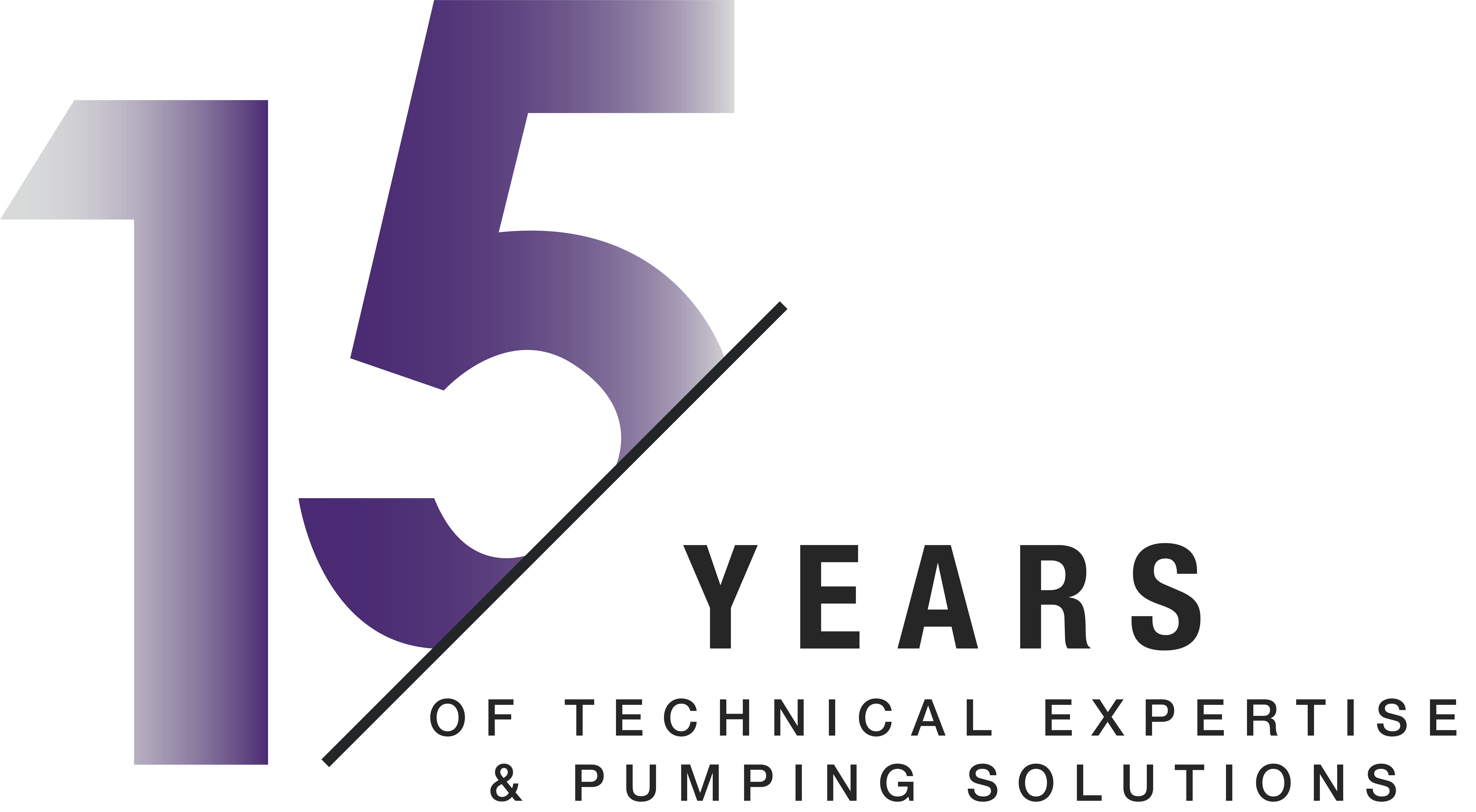
Castle Pumps are fully accredited to enable you to buy with confidence. Our accreditation includes:
![]() A division of the CTS Group, Part of Flow Max Ltd.
A division of the CTS Group, Part of Flow Max Ltd.